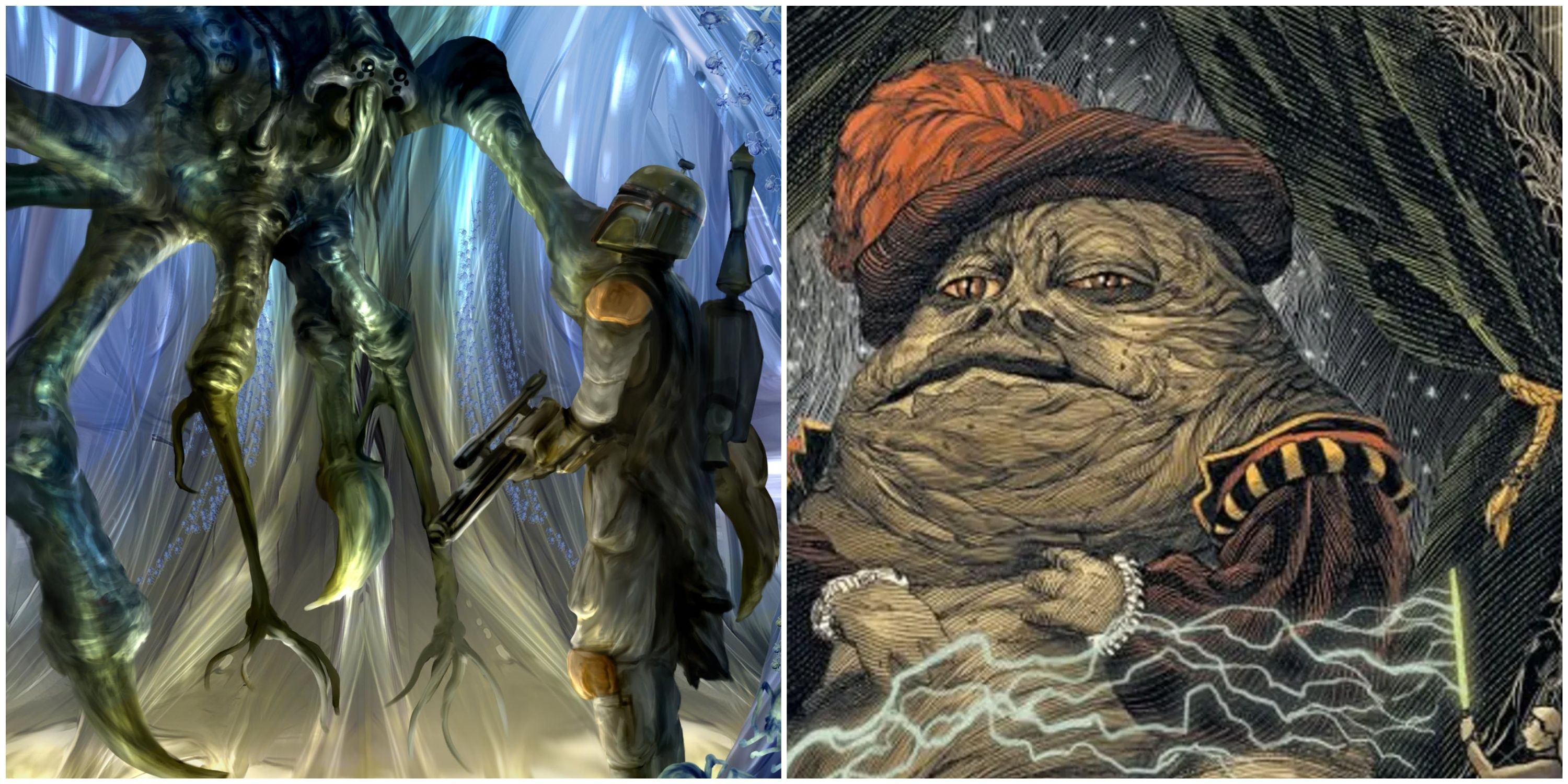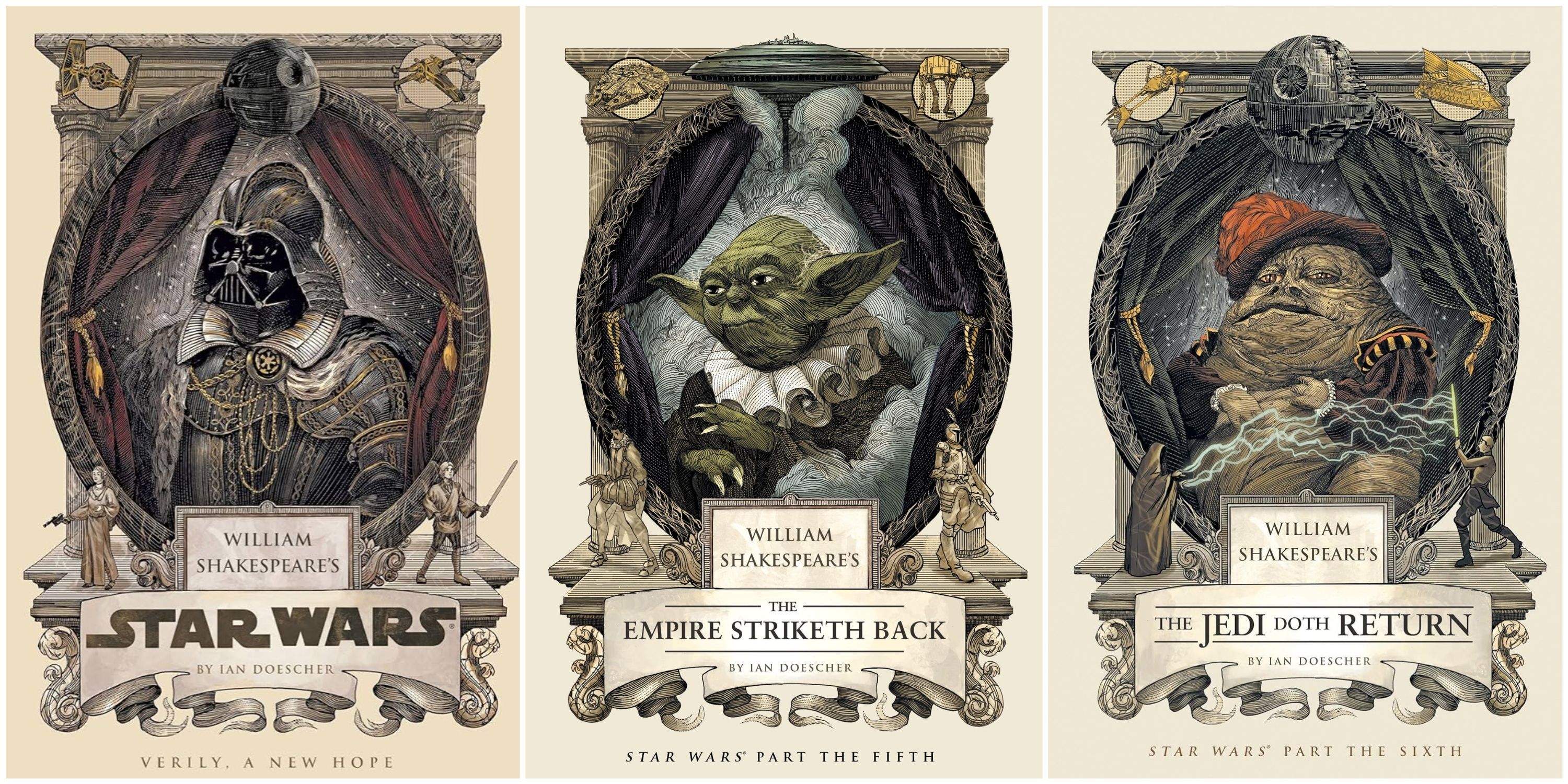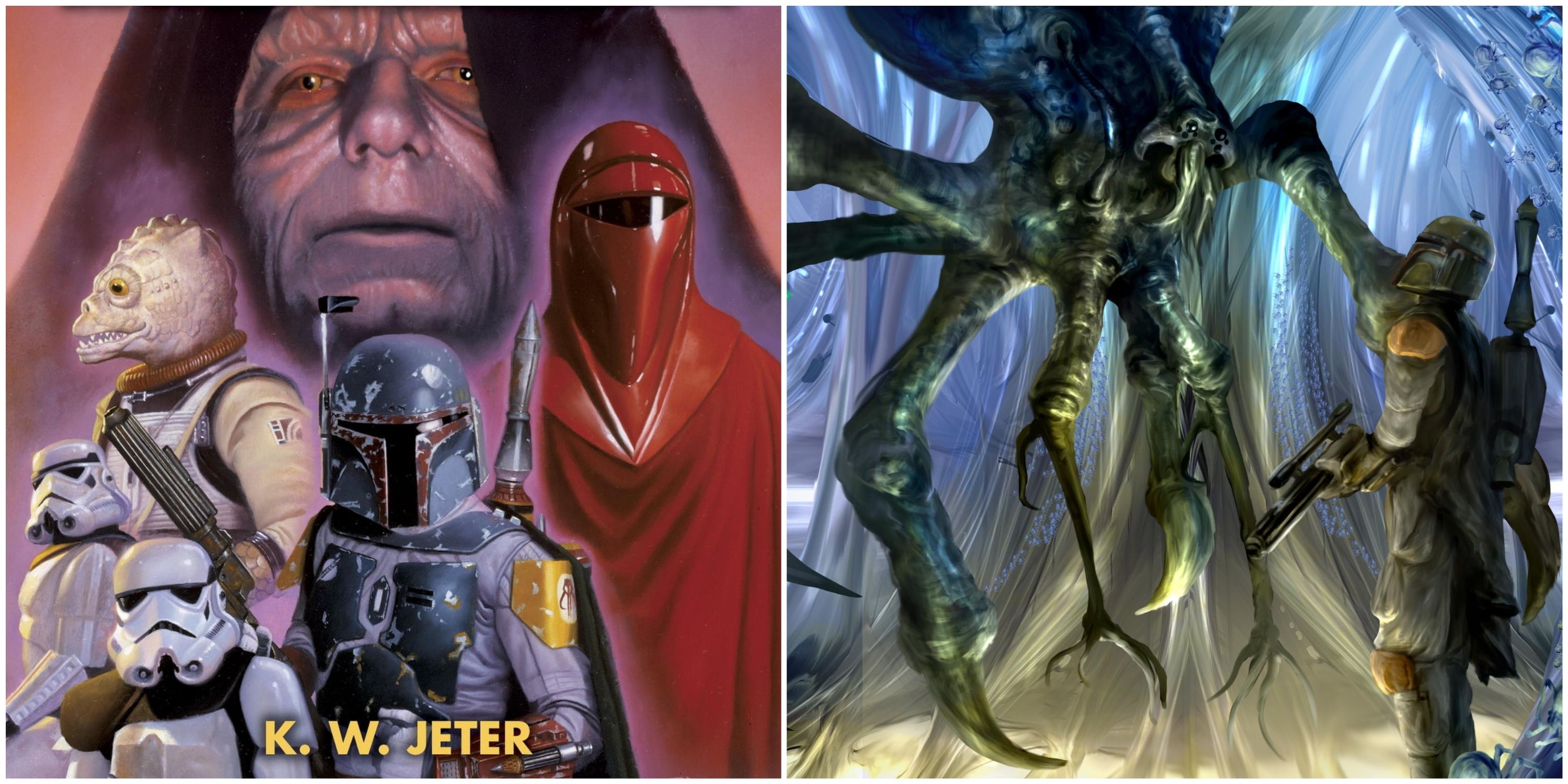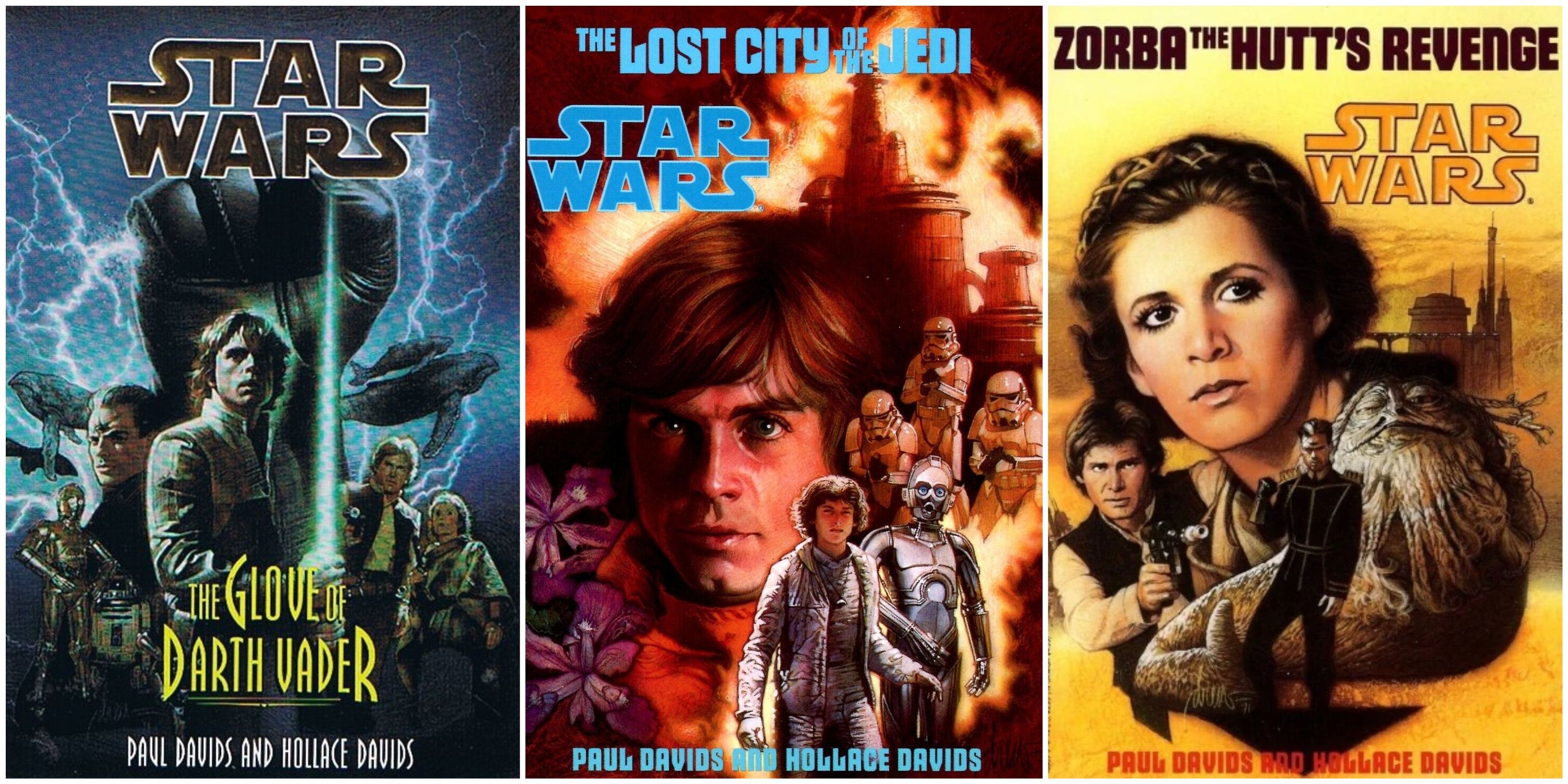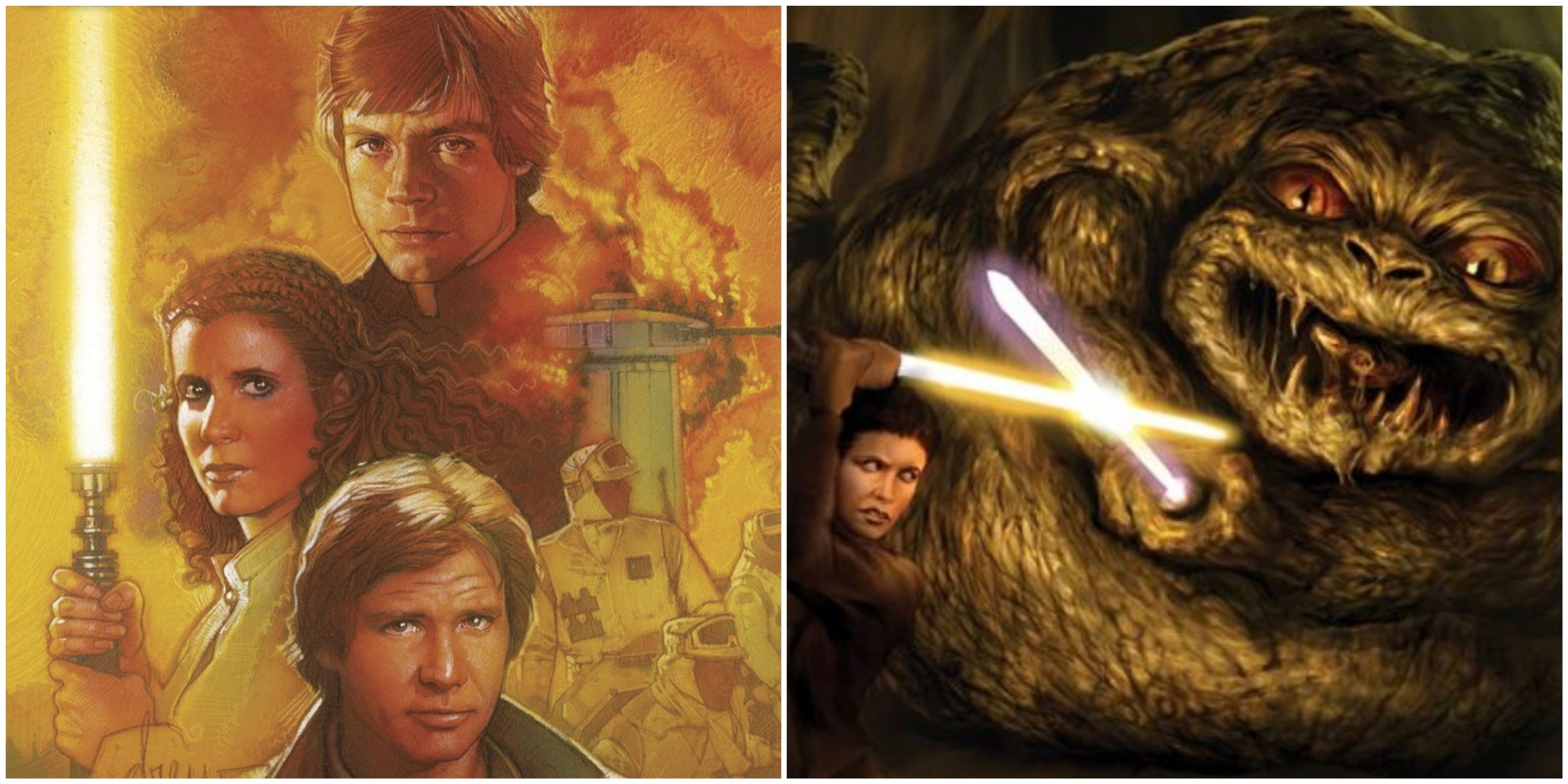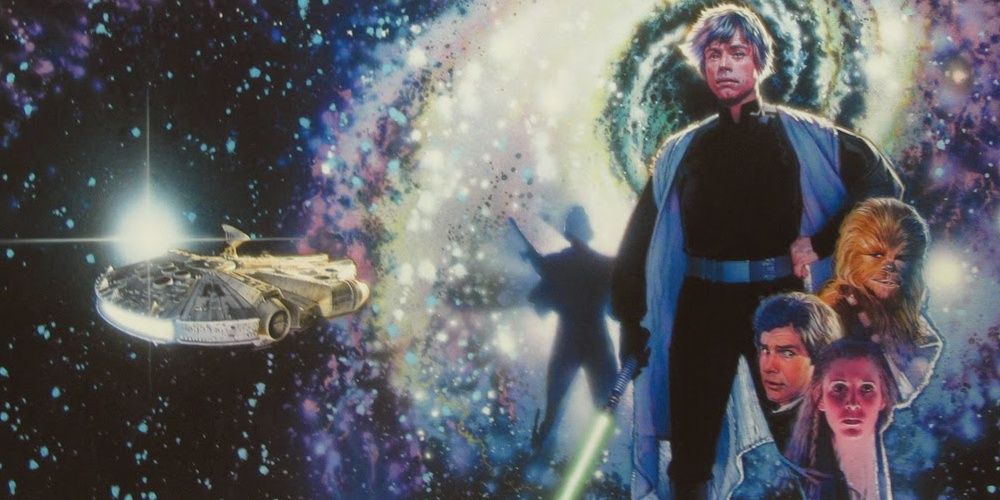Enough Star Wars books exist to fill an entire library, and many of these novels make valuable contributions to the established lore. In the process, they deepen fans' understanding of the films and make their events far more meaningful. More importantly, they let devotees lose themselves in this beloved galaxy. Unfortunately, not all additions feel natural.
A lot of these books are just plain weird. They often include concepts which are totally out of left field and misplaced within the Star Wars mythos. However, that doesn't mean they're not entertaining. The novels might be engaging as stories, or they may boast quirks so ridiculous that fans can't look away. Both of these are good reasons to keep reading.
5 William Shakespeare's Star Wars by Ian Doescher
Most Star Wars novels detail events outside the movies, but these works retell the classic tales in text form. That sounds mundane and pointless. However, the twist makes the journey worth it. The books reimagine each trilogy in the style of William Shakespeare. The structure and language emulates the iconic playwright. It doesn't take a theater nut to see the appeal.
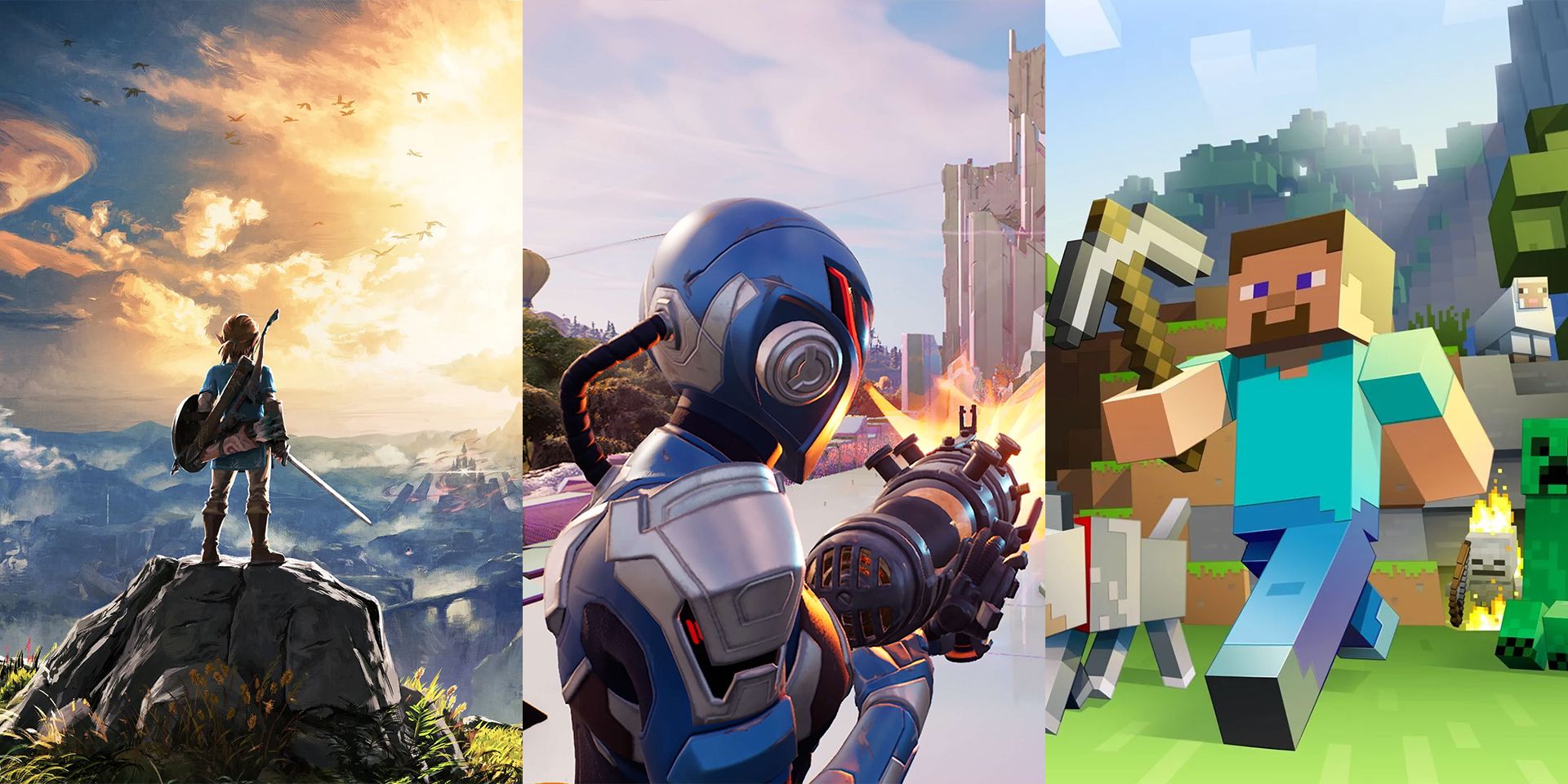
9 Children's Games With Surprisingly Deep Lore
These children's games with an ESRB or PEGI rating of 12 years and below feature surprisingly deep lore usually present in games for mature audiences.
This combination is random yet perfect. The flowery word choice creates a chuckle-worthy contrast with the sci-fi jargon. It's also hilarious to hear such old-fashioned verbiage from down-and-dirty rogues like Han Solo. At the same time, it's oddly fitting given how melodramatic Star Wars can get. The franchise is a space opera, after all. The only thing funnier would be a Deadwood makeover in homage to its space western roots, but this is the next best gimmick.
4 Hard Merchandise by K.W. Jeter
At first glance, Hard Merchandise seems like a standard bounty hunter adventure. Boba Fett navigates the seedy parts of the Star Wars galaxy and slowly unravels a mystery involving the Black Sun organization. It's a solid premise with enough twists and turns to satisfy fans. That said, a bizarre narrative choice sticks out like a sore thumb.
One of the scoundrels whom Fett encounters is Kud'ar Mub'at. He's basically a giant spider. Throughout his colossal web are his helpers who pass information to him. In turn, he uses that info in interactions with the galaxy's greatest crooks. A literal web of info is an appropriate piece of imagery, but a gargantuan arachnid is the type of earthly fantasy that belongs in The Lord of the Rings or Harry Potter. It feels totally out-of-place in Star Wars. If readers can get over that, though, they should enjoy the book based on its other merits.
3 The Jedi Prince Series by Paul & Hollace Davids
Countless novels chronicle the events after Return of the Jedi. The most acclaimed is the Heir to the Empire trilogy, but the most bizarre are the Jedi Prince books. This series sees Imperial remnants attempt to retake power. Leading them is Trioculus. He's supposedly the son of Emperor Palpatine, but he's also a genetic experiment with three eyes. Needless to say, he's pretty on-the-nose. However, that's just scratching the surface of silliness here.
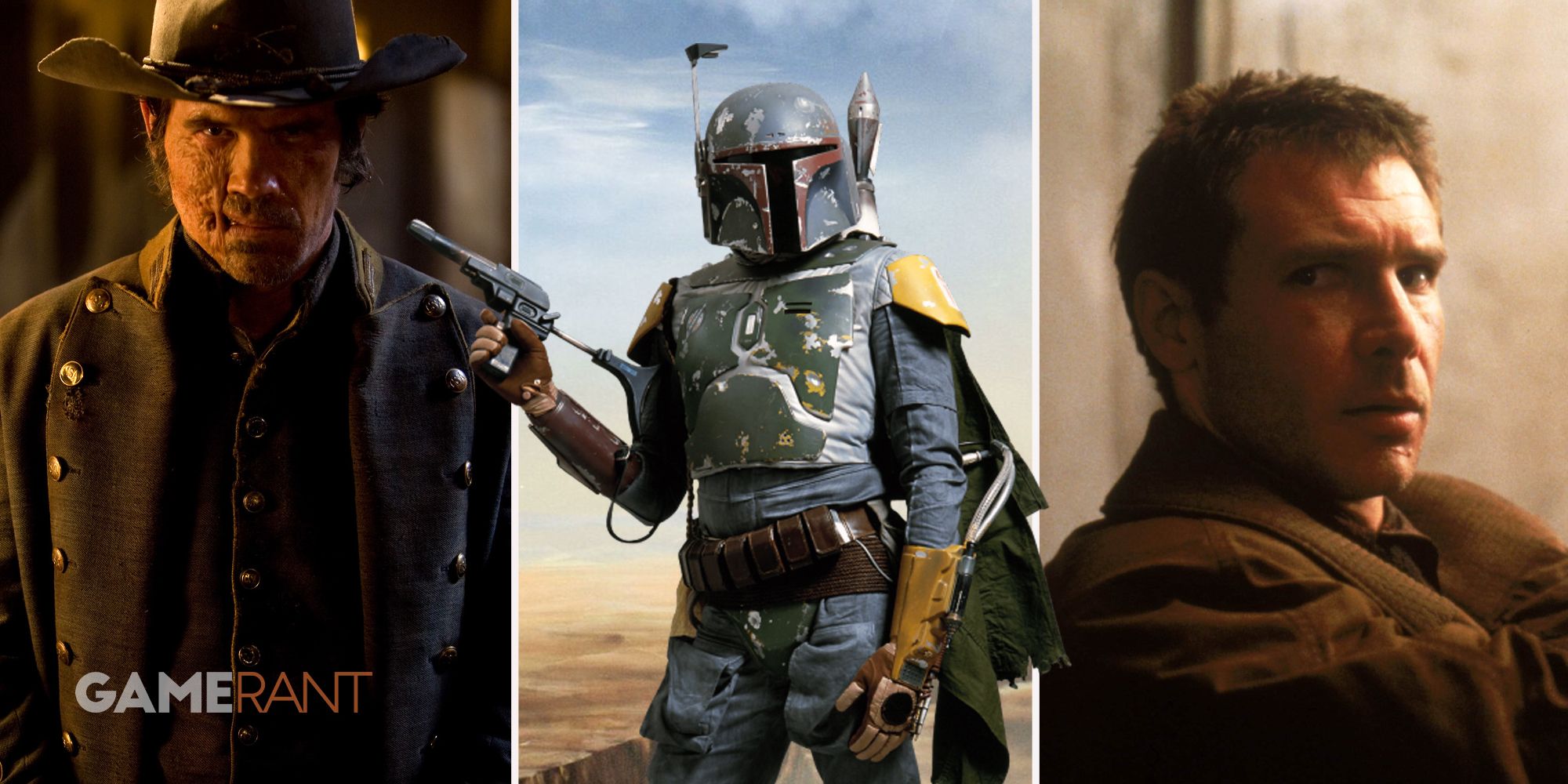
6 Most Iconic Bounty Hunters In Sci-Fi Movies
When it comes to sci-fi bounty hunters, a few stand out as being memorable. Here are some of the most iconic mercenaries ever.
These books are rife with bizarre plot threads. They often assign major import to completely insignificant things. For instance, Darth Vader's glove is apparently a symbol of leadership and gives the wearer the right to rule. Alternatively, the novels make random lore additions that are never mentioned before or since. Examples include the Church of the Dark Side and the Lost City of the Jedi. It all unfolds through the dialogue, which tries to emulate the movies' witty remarks yet falls flat on its face. The series comes off as a teenaged Dungeons & Dragons player writing a Star Wars fan fiction. That's a condemnation in several ways. On the upside, fans can laugh at these tales, wondering which goofy concept they'll introduce next.
2 Planet Of Twilight by Barbara Hambly
Star Wars has dealt in horror before. Look at the Geonosis brain worms in The Clone Wars or the Nightsisters in any of their stories. Planet of Twilight, however, introduces vampires. That sounds like a horrible idea on paper, but the book pulls it off. Despite the title, these vampires predate the sparkling variety. Instead, the tale frames them as an insectoid species native to a particular world. This enhances the sense of foreboding surrounding that world.
Akin to a haunted house or moonlit graveyard, readers feel the ominous history and paranoia of the place. Then again, paranoia implies there's nothing to be afraid of, which isn't true. The blood-sucking bugs can jump out at any second. All of these factors create a chilling atmosphere. Perhaps the franchise should dabble in horror more often. It's just unfortunate that the book throws that horror out the window toward the end.
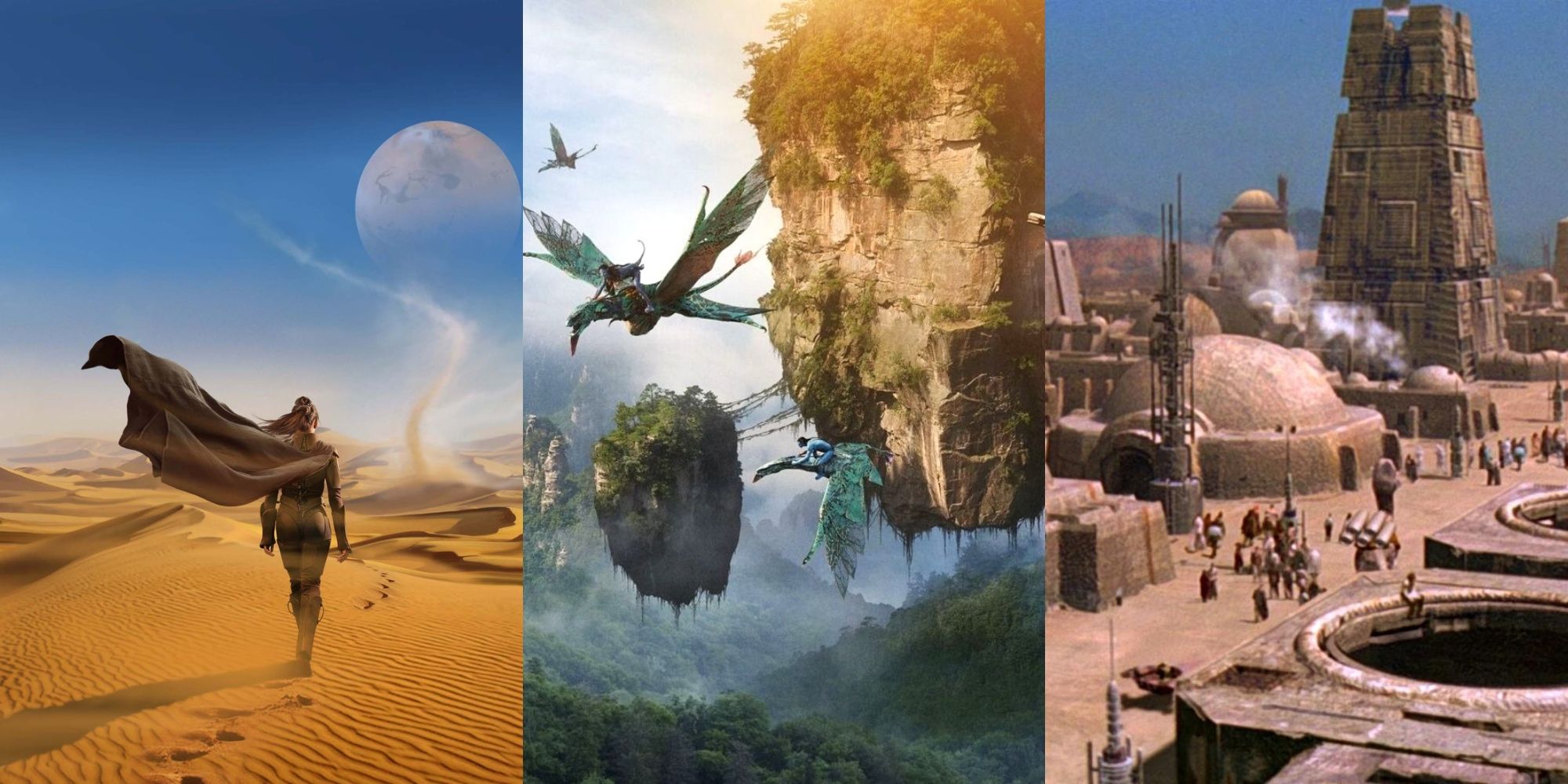
7 Most Iconic Fictional Planets In Movies
Sci-fi movies do a great job at creating exciting new worlds and settings for fans, and even planets, like these iconic examples
Leia eventually winds up in a lightsaber duel with a Hutt. The mental image of her fighting an oversized slug somewhat diminishes the creep factor, but it's still fun to imagine. The scene simply offers a different kind of enjoyment from the rest of the book.
1 The Crystal Star by Vonda N. McIntyre
This piece takes the ironic fun of previous entries and ramps it up to eleven. The Crystal Star dives straight into cheesy 1980s fantasy. Werewolves, centaurs, and other fairy tale creatures run rampant. Luke, Han, and Leia suffer more character assassination than in the sequel trilogy. Gullible and oblivious, they all regress in their respective arcs. As awful as that sounds, the true inanity rears its head with the villain.
The evil mastermind is Waru. He's a bloated blob from another dimension, and his way home is to consume a Force-sensitive child. That's right, he wants to eat a baby. To say this is ridiculous would be an understatement. Yet, much like the campy '80s flicks it echoes, The Crystal Star is fascinating in all the ways it fails. The book is like a trainwreck. Audiences want to look away, but they just can't. In that sense, the novel does its job.

